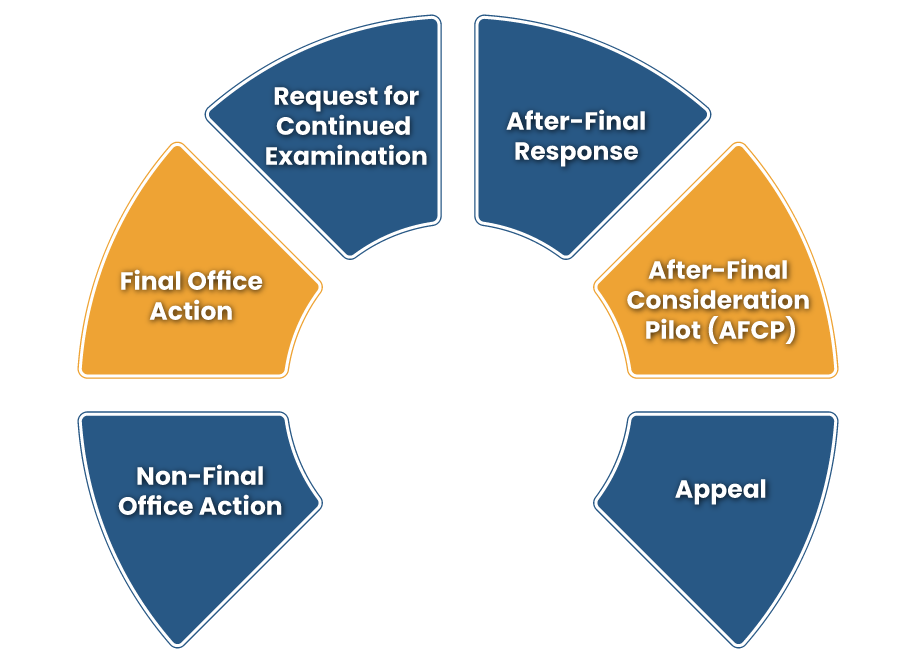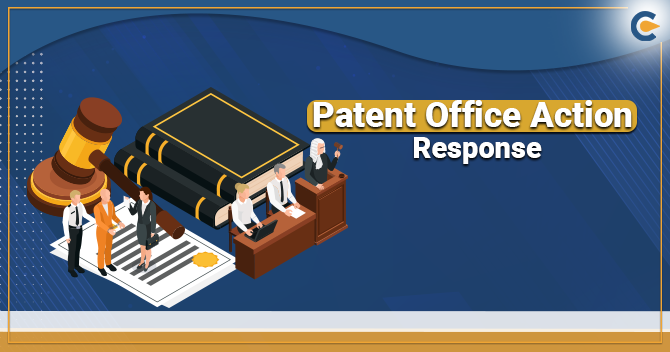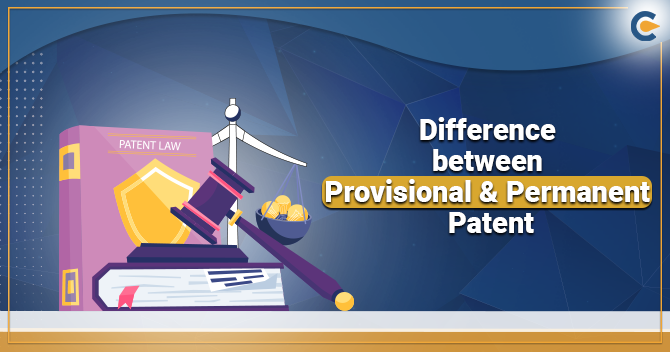A patent is an intellectual property rights exclusively granted to the inventor after patent registration of an invention made by him which is a patentable subject matter, new, non-obvious and capable of industrial application. At the point when a patent is filed and sent for assessment of its legitimacy, the Examiner at the patent office checks for its qualification and formal requirements according to law of each jurisdiction. After which a preliminary judgment is given which is called FER or First Examination Report which recommends any sort of correction or alteration, or straightforwardly gives out dismissal if the application is considered as being not fit and qualified. After which the patent attorneys in patent office or specialists will set up a reaction containing clarifications which is likewise called Patent Office Response Action.
What do you mean by Patent Office Action?
- A patent office sends an official letter to the inventor intending to take an office action.
- The patent examiner through the letter intends to require amendments of the claims in invention, resubmission of the drawings, any additional information, etc.
- After the inventor has filed the examination of his invention with the utility non-provisional patent application to the respective assigned patent examiner, the patent examiner will scrutinize, review and decide the novelty of the invention and the invention’s industrial applicability according to the central law.
- After which the patent examiner or specialists will set up a reaction containing contentions, clarifications that might be opposing or obliging the inventor’s necessities according to the cases required which is likewise called Office Action Response.
- Office actions are very common and at least one Office Action is expected especially in applications for utility patents.
- Eventually, after various office actions and answers (to be heard), the examiner will give a final judgment over the patent. Same things happen during pre and post opposition application of patent grants.
- However, the office action activities are done by three entities, the inventor or the applicant, the examiner and the party filing opposition.
Read our article:Detailed Process of Patent Registration in India
Different Types of Office Action & Responses


Response to Patent Office Action
- The patent office response should distinguish whether a claim set should be revised or the arguments will be founded on original claim set.
- If the inventor or the applicant wishes for altering the claim set, he can generate the appropriate amended claim set and the same is approved by the client in the patent office response.
- Furthermore, any difference between altered or original claim set shall be specifically mentioned in the patent office response application.
- The patent office response application has to be very well written and the arguments and response to the office action must be strongly prepared to avoid any damage to the prospective innovation’s protective right.
- Obviousness of the invention in the patent office response application shall be debated several times during the examination of the invention. Therefore, appropriate legal response to prove the obviousness must be properly framed.
- The drafting of patent office response is a non-technical thing. To keep things precise, correct and capably on time a template is followed for drafting a patent office response. The draft has to abide by the jurisdictional[1] requirement and must be according to the needs of clients.
- The patent office response must be in particular to the exact objection or rejection as raised by the examiner and any references if given in it.
- It is very important to differentiate between the formal and informal objections, in which subject matter of the application according to the patent laws may be related to the formal objection and the rules and regulations are the informal objections and both must be altered accordingly.
- Drafting the patent office responses after the Opposition and patent grant prosecutions includes experience and knowledge of litigation areas.
- It is important to keep in touch with the client and the inventors and take their feedbacks as and when needed.
- The patent office response has to be drafted in a manner compatible with all the formal requirements as in accordance with the examiner of the patent office.
- The most important thing above all is that the patent office response must mention the inventions novelty, usefulness and non-obviousness.
- List of required documents has to be cited along with the patent office response. Few of them includes:-
- Patent Literature– This will cover the detail of documents in case there is similar patent filed prior to the latter patents and shall mention their publication date and priority and correspondingly.
- Non-Patent Literature– Documents that are not patent published are cited for reference.
- Documents on record.
- Evidence supporting the documents.
Responding to Office Actions Issued by Patent Examiner
Recently, there have been some important changes in Indian patent practice before the Indian Patent Office. One of the most noteworthy and significant change is the time to reply to the patent Examination Report under sections 12 & 13 of the Patents Act, 1970 and the Patents Rules, 2003.
Only if the patent applicant has filed request for examination form before the patent office then only the report of patent Examination is given to him. The patent applicant is obliged to file Form 18 and this is normally known as RFE request form. Under the patent amendments in India the patent inventor has to act in accordance with all the obligations given in the patent examination report.
The main time limit date to put for the order of grant of the patent application is within 6 months from the issuance of first statement of objection as prescribed under Rule 24B (ii)(5) of the Patent Rule, 2003.
Conclusion
Patent office action is generally expected if the patent office examiner is doubtful about the novelty, usefulness and non-obviousness of the invention. The examiner then takes a patent office action in which he raises his objections and rejections to the claim and invention of the inventor or the applicant.
Thus, the inventor is bound to file a respond to the patent office action which is called patent office action response in which he must draft in a certain way that satisfies the examiner’s doubt and makes his invention approved.
Read our article:5 Remarkable Benefits of the Patent Registration in India











